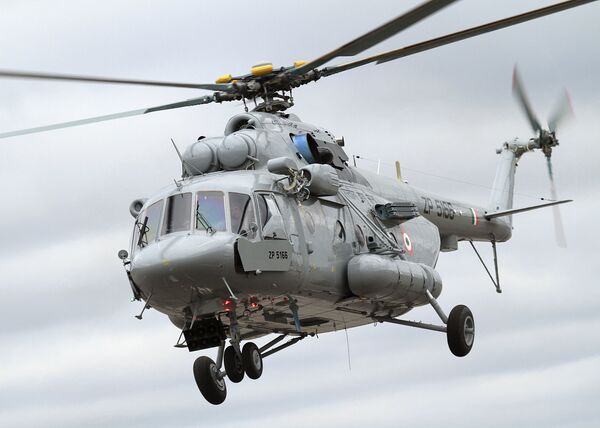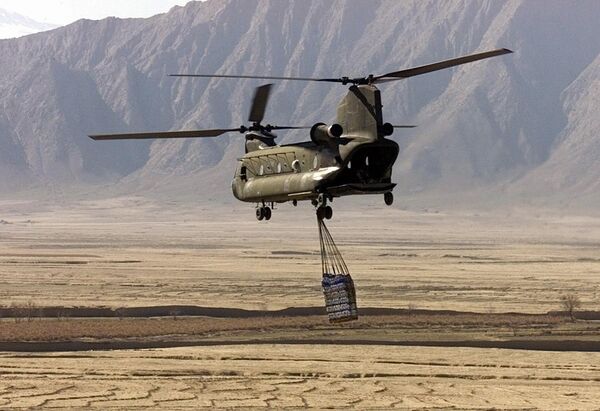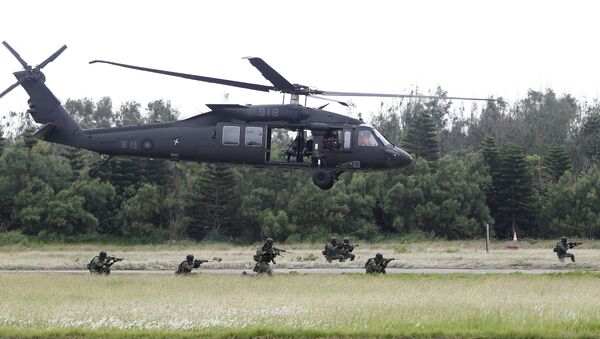The Pentagon had once planned to supply the AAF with 159 Black Hawks in a bid to dramatically enhance their mobility in the hilly Afghan countryside. Former US Forces-Afghanistan Commander Gen. John Nicholson once hailed it as a game changer in the 18-year-long war against the Taliban. However, in a December 2019 report, the US Department of Defense said it planned to cut the number of UH-60 Black Hawks it would be supplying to the AAF to 53 - just one-third of the original.
The report, titled “Enhancing Security and Stability of Afghanistan,” also notes the AAF will only receive 10 of the planned 32 AC-208 Eliminator ground attack aircraft the DoD had planned to supply.
“These reductions were made on the basis of a review of future operational requirements,” the report notes, without further qualifying the reasons for the cuts. However, other information in the report may supply some clues.
The report also notes the DoD plans to completely replace the AAF’s fleet of Russian-made Mi-17 transport helicopters with US-made CH-47s by 2023. It doesn’t say how many that would be, but the AAF presently has 45 Mi-17s. The report further notes the AAF has just 65 qualified UH-60 pilots.
The US Special Inspector for Afghanistan Reconstruction (SIGAR) has also noted the problem, writing in early 2019 that supplying so many aircraft risks wasting taxpayer dollars when “the Afghan air force and special mission wing may not be able to fully use all 159 aircraft when delivered.”

Military Times noted there’s considerable resistance to replacing the Mi-17s with Black Hawks because of the latter’s vastly inferior lifting capacity as well as its more complex maintenance needs. By comparison, the dual-rotor CH-47 is a real powerhouse, capable of carrying twice the load of a UH-60 and substantially more than an Mi-17.
“Given that it takes substantial US support to maintain the airframes that the Afghan Air Force has already, it doesn’t seem feasible that they would be able to support that many Black Hawks without a significant contribution from NATO,” independent researcher and consultant on South Asian issues Matthew Archibald told the outlet in 2017.
Afghanistan’s continued use of Russian-made helicopters may also be a continued sore spot for Washington. In addition to the dozens of Mi-17s it operates, the AAF also flies Mi-35 gunships, which are upgraded versions of the Mi-24 attack helicopter, it has received as gifts from India and the Czech Republic.

Back in October, Kabul received two more Mi-35 gunships from India, bringing the total number supplied by New Delhi to 10, Defense Post reported at the time. However, the DoD reports only four in operation; others may have been lost in combat.
A footnote in the DoD report notes the US “does not provide any funding or advisory support for Mi-35s. The Mi-35s were removed from the authorized fleet in 2015 but the Afghans continue to attempt to sustain them. DoD has advised them against doing so and to instead focus on the aircraft that DoD is providing as a part of the aviation modernization program. A modification to nonproliferation sanctions that allows DoD to continue to sustain Mi-17s specifically does not include Mi-35 variants.”
The US has tried to deter countries from buying advanced, Russian-made weapons with threats of economic sanctions if they do so. In 2018, the Philippines was successfully pressured into buying Black Hawks from Washington instead of Russian-made Mi-171 helicopters by the threat of punishment under the Countering America's Adversaries Through Sanctions Act (CAATSA), Sputnik reported at the time.
The Diplomat has noted an agreement between Moscow, New Delhi and Kabul provides for the maintenance of the gunships. Likewise, back in March 2019, Slovak aircraft repair firm LOTN caught flak from Russian Helicopters, which makes both Mi-17s and Mi-35s, for having overhauled several Afghan Mi-17s without input from the helicopter’s designer, Mil Moscow Helicopter Plant, or its manufacturer, Kazan Helicopters.


